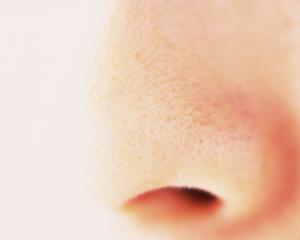Microfluidics: Lab on a breathing chip

Seeding a membrane on a microfluidic chip with human nasal epithelial stem cells enables the formation and observation of beating cilia. © DAJ/Thinkstock The upper respiratory tract is the first line of defense against air pollutants, including allergens, bacteria and environmental toxicants. Finger-like protrusions called cilia on the surface of the human mucous membrane, or epithelium, sway back and forth when irritated. This coordinated ‘beating’ movement of the cilia helps to remove foreign materials and is an important protective mechanism. Wei Wang and Zhi Ping Wang at the A*STAR Singapore Institute of Manufacturing Technology, De Yun Wang at the National University of Singapore and co-workers have now developed the first microfluidic device that enables the direct observation of cilia and their
The upper respiratory tract is the first line of defense against air pollutants, including allergens, bacteria and environmental toxicants. Finger-like protrusions called cilia on the surface of the human mucous membrane, or epithelium, sway back and forth when irritated. This coordinated ‘beating’ movement of the cilia helps to remove foreign materials and is an important protective mechanism.
Wei Wang and Zhi Ping Wang at the A*STAR Singapore Institute of Manufacturing Technology, De Yun Wang at the National University of Singapore and co-workers have now developed the first microfluidic device that enables the direct observation of cilia and their beating frequency on a polyester membrane[1]. The artificial system is used to observe the effects of air pollutants on cells in the upper airway.
The researchers constructed their microfluidic device using glass and a transparent, moldable polymer to ensure a clear view of the cilia and their activity. A membrane — designed to support the cultivation and differentiation of human nasal epithelial stem cells — was inserted into a small chamber on the device and fresh or contaminated air was fed through a tiny channel.
Five weeks after seeding the membrane with human nasal epithelial stem cells the researchers could observe the formation of beating cilia. The cilia beating frequency varied across samples but the difference was typically within a few hertz.
When fresh air was passed into the chamber, the researchers observed a 3 per cent drop in cilia beating frequency relative to the baseline value. In contrast, when air mixed with 0.5 milligrams per cubic meter of formaldehyde was passed through the chamber, they observed a 7.4 per cent increase in cilia beating frequency relative to the baseline value.
Further increasing the formaldehyde concentration to 1 milligram per cubic meter led to a dramatic increase — up to 136.4 per cent — in cilia beating frequency relative to the baseline value. At even higher formaldehyde concentrations of 3.0 milligrams per cubic meter, however, the researchers observed an unexpected decrease in cilia beating frequency, possibly due to irreversible cell damage caused by the formaldehyde.
By enabling the observation of cilia beating frequency, the experimental model described in this work provides more realism for clinical applications. The device can be used to directly test for toxicity and toxic mechanisms, screen for drugs that reduce irritation, and assess the level of risks associated with a particular air pollutant. “The technology has applications in chemical analysis, environmental monitoring, medical diagnostics and cellular studies,” says Wang.
Reference
1. Wang, W., Yan, Y., Li, C. W., Xia, H. M., Chao, S. S., Wang, D. Y. & Wang, Z. P. Live human nasal epithelial cells (hNECs) on chip for in vitro testing of gaseous formaldehyde toxicity via airway delivery. Lab on a Chip 14, 677–680 (2014).
Associated links
Media Contact
More Information:
http://www.researchsea.comAll latest news from the category: Life Sciences and Chemistry
Articles and reports from the Life Sciences and chemistry area deal with applied and basic research into modern biology, chemistry and human medicine.
Valuable information can be found on a range of life sciences fields including bacteriology, biochemistry, bionics, bioinformatics, biophysics, biotechnology, genetics, geobotany, human biology, marine biology, microbiology, molecular biology, cellular biology, zoology, bioinorganic chemistry, microchemistry and environmental chemistry.
Newest articles

High-energy-density aqueous battery based on halogen multi-electron transfer
Traditional non-aqueous lithium-ion batteries have a high energy density, but their safety is compromised due to the flammable organic electrolytes they utilize. Aqueous batteries use water as the solvent for…

First-ever combined heart pump and pig kidney transplant
…gives new hope to patient with terminal illness. Surgeons at NYU Langone Health performed the first-ever combined mechanical heart pump and gene-edited pig kidney transplant surgery in a 54-year-old woman…

Biophysics: Testing how well biomarkers work
LMU researchers have developed a method to determine how reliably target proteins can be labeled using super-resolution fluorescence microscopy. Modern microscopy techniques make it possible to examine the inner workings…





















